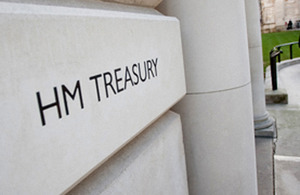Billion pound connectivity boost to make buffering a thing of the past
New Digital Infrastructure Investment Fund will unlock over £1 billion for full fibre broadband across the country.
Brits will soon see the back of internet buffering and painfully slow download times, following the launch of a new fund on Monday, which will support the rollout of cutting-edge connections across the country.

The government’s £400 million Digital Infrastructure Investment Fund (DIIF) will unlock over £1 billion for full fibre broadband, and kick-start better broadband connections across the country.
Ministers seek to revolutionise Britain’s digital infrastructure, making internet access more reliable for homes and businesses, and enabling more people to work remotely without disruption. The flexibility to work remotely is pivotal for driving our economy forward; reducing overheads and helping businesses to start and grow.
The government has already invested £1.7 billion to spur industry to rollout superfast broadband across the UK. This new fund will take that to the next level.
Launching the fund during a visit to Peterborough on July 3th, the Exchequer Secretary to the Treasury Andrew Jones MP will say:
We are investing £400 million to make sure the UK’s digital infrastructure is match-fit for the future. As technologies change and people’s habits move with them, it is crucial we play our part to ensure Britain stays at the front of the pack.
Gone will be the days where parents working from home see their emails grind to a halt while a family member is gaming or streaming Game of Thrones in the next room. Full fibre will provide us with the better broadband we need to ensure we can work flexibly and productively, without connections failing.
***************Further Information***************
This investment, announced at Autumn Statement 2016, will be in addition to the government’s £23 billion National Productivity Investment Fund aimed at improving productivity, which is key to raising living standards.
Traditionally in Britain, full fibre has been difficult to finance because the industry is relatively young and a lack of certainty around future demand makes investment hard to secure. This has held back alternative providers from entering the market and consumers have been left with limited choice, which in turn, has restricted their ability to benefit from this latest technology.
The fund, which is expected to more than double the government’s £400 million investment, and unlock over £1 billion of capital in the sector, will be managed and invested on a commercial basis by private sector partners, generating a commercial return for the government. It will ignite interest from private finance to invest in the sector, resulting in more alternative providers entering and expanding in the market.
Britain’s homes are mostly connected to the internet via underground copper wires to a green cabinet on the street. Full Fibre networks seek to run fibre connections straight to the doors of customers’ homes or businesses, via laser light flashes through glass or plastic tubes, making broadband stronger and more consistent. Unlike broadband run through copper wires which can be degraded by distance or the number of people accessing the internet at any one time, full fibre networks are much more resilient.
Peterborough was the winner of Smart City of the Year at the 2015 World Smart City Awards. It has a 120 km full fibre network, built by an independent network builder and operator, CityFibre, following a successful demand aggregation campaign, which saw 25% of the city’s businesses register an interest and enabled the network to be extended to all 6 of Peterborough’s business parks. Currently 300 sites of sites in Peterborough, including schools and hospitals, have been connected to the network. 4,000 businesses also have access.
With the Peterborough core network established and successful, benefiting from a motivated local authority and demand aggregation, the city is now a prime candidate for further extension of the network to residential areas, which the DIIF could help finance.
Source: UK HM Treasury
- 249 reads
Human Rights
Ringing FOWPAL’s Peace Bell for the World:Nobel Peace Prize Laureates’ Visions and Actions

Protecting the World’s Cultural Diversity for a Sustainable Future

The Peace Bell Resonates at the 27th Eurasian Economic Summit

Declaration of World Day of the Power of Hope Endorsed by People in 158 Nations

Puppet Show I International Friendship Day 2020

